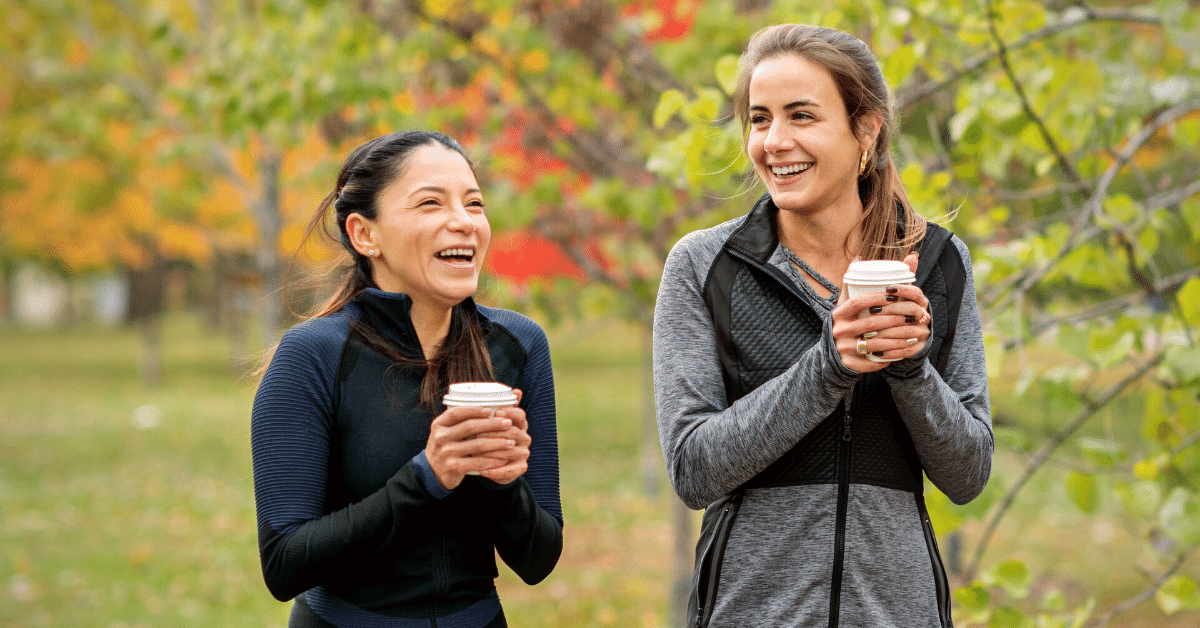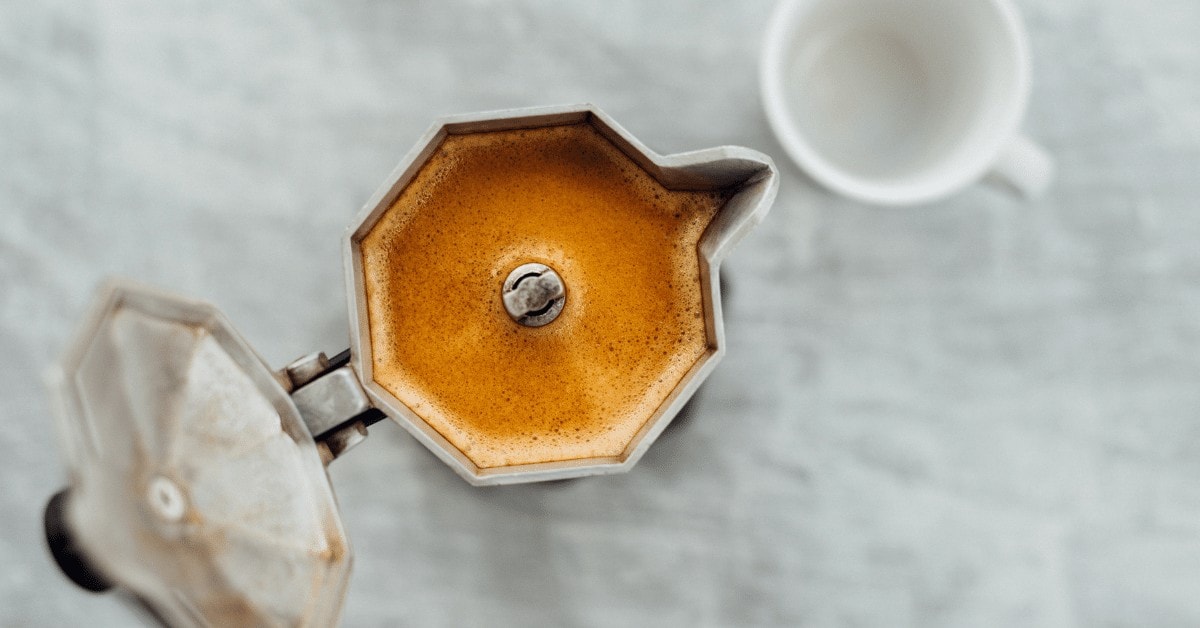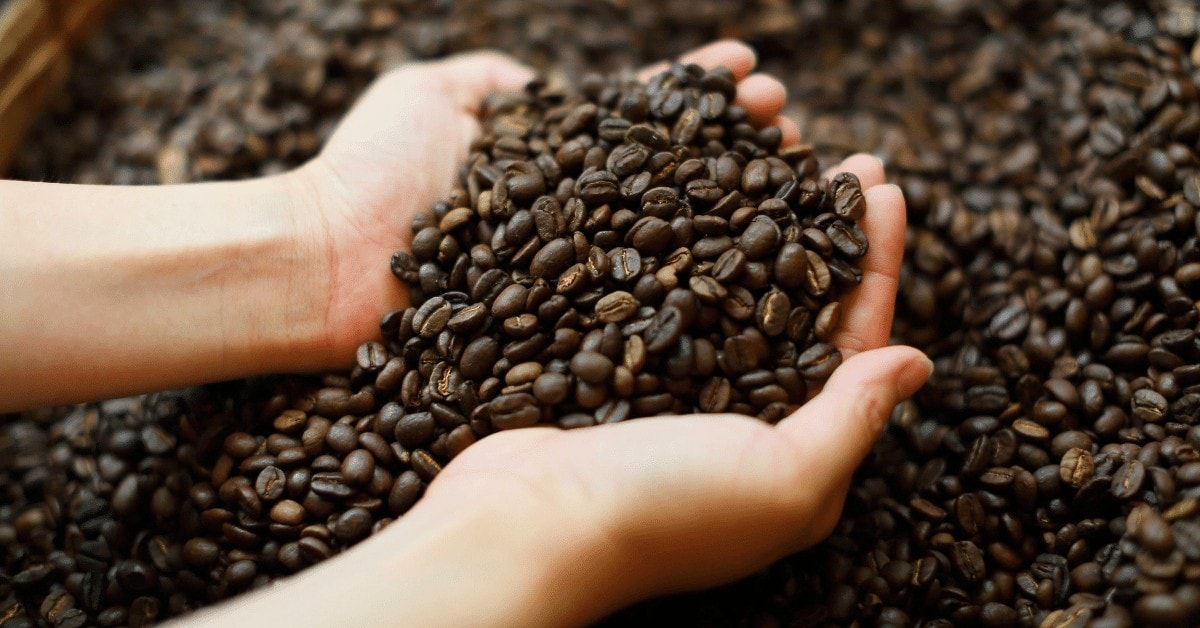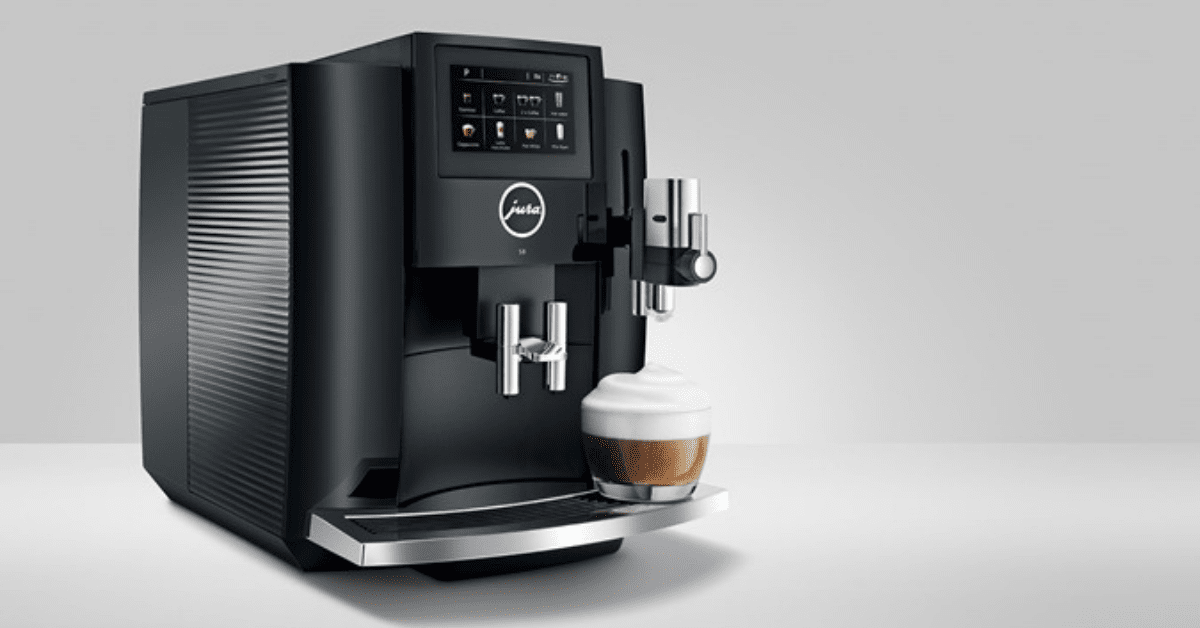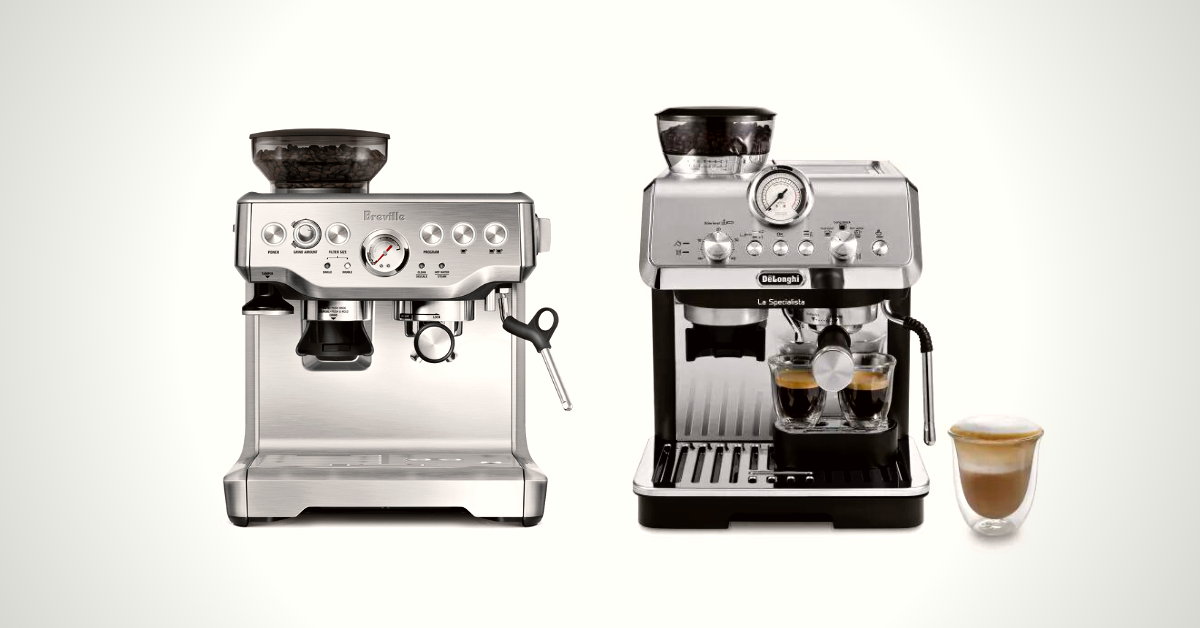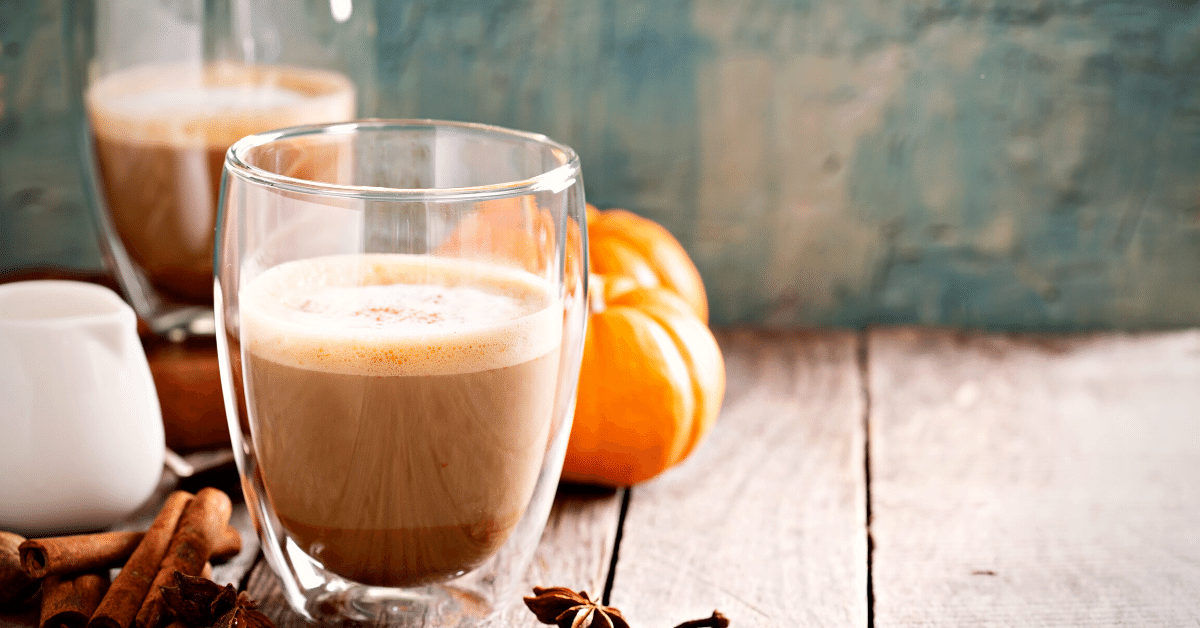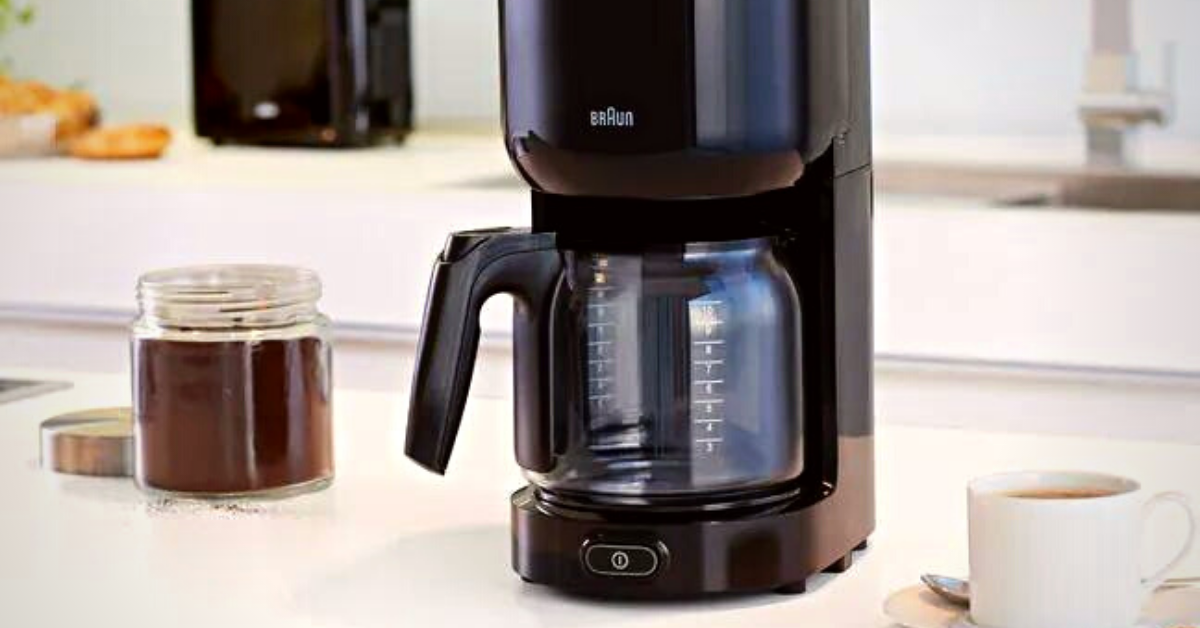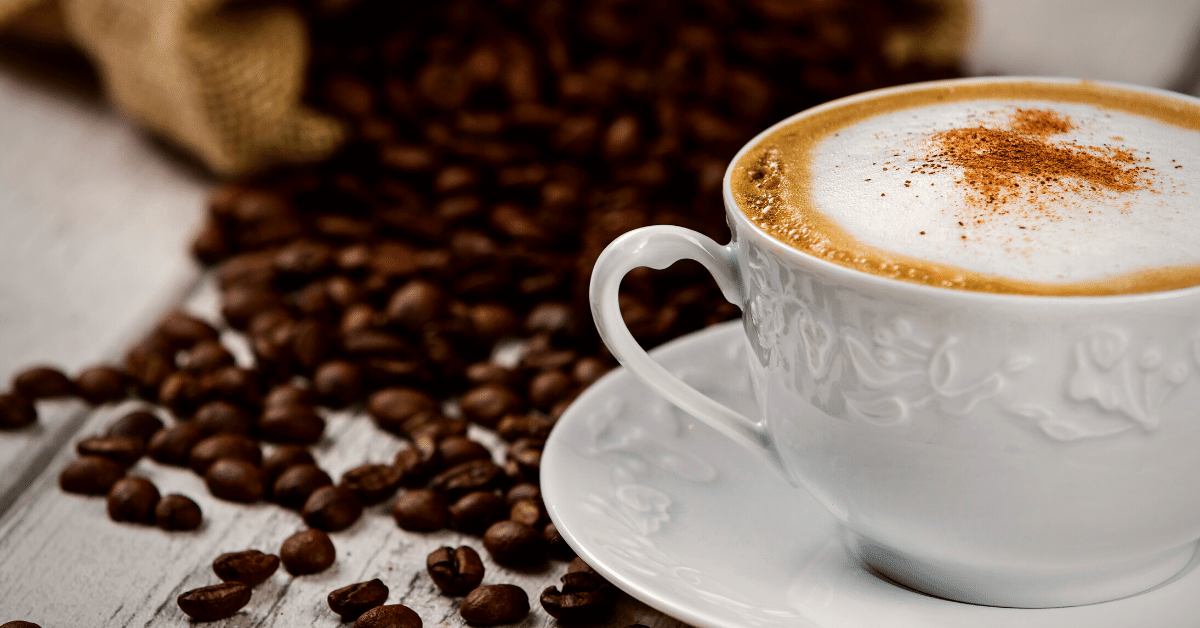How many types of coffee do you know?
You’d be amazed at how many different types there are.
From coffee beans, to roasts, brewing methods, and drinks, there’s certainly plenty of variety when it comes to coffee.
As a trained barista, I’ve seen, made, and tasted it all. And I’m here to share everything I know with you.
In this article, I’m going to take you through the process from start to finish – bean to cup.
So, let’s get started!
Coffee Beans
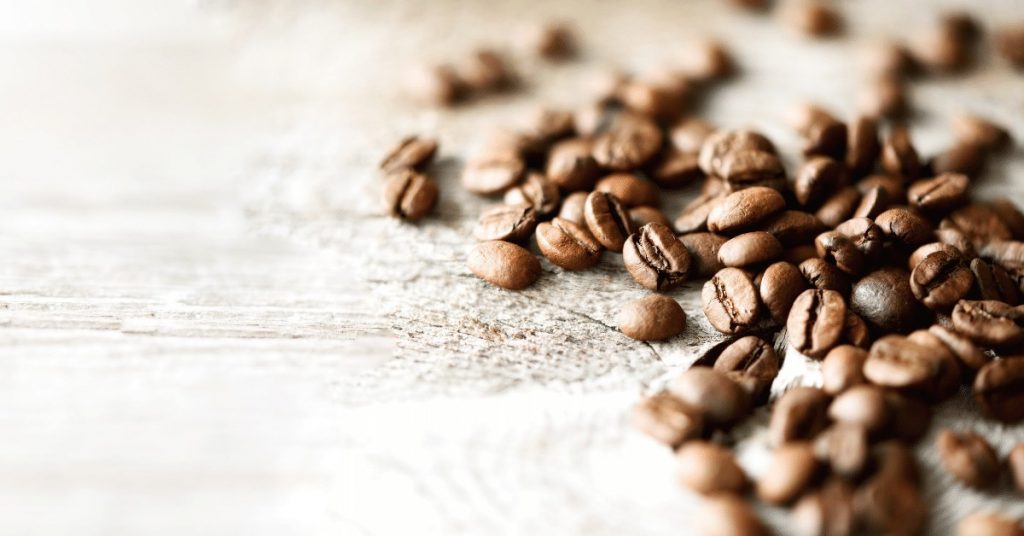
The vast majority of coffee consumed throughout the world comes from just 2 types of coffee beans:
- The arabica bean
- The robusta bean
Most of the time, you get a blend of both.
Liberica and excelsa beans can also be found in some places, although they are far less common.
Good news for coffee lovers : another type of coffee bean, stenophylla, has recently been rediscovered in the wild after over half a century. It isn’t commercially cultivated yet, but there’s a good chance it will be in the future.
Here’s what you need to know about each of these types of coffee beans.
Arabica
Let’s start with the cream of the crop – arabica.
Coffee beans of the arabica variety grow at higher altitudes, starting at 4000 ft above sea level. Because of this, they don’t have as many predators to protect themselves from, so they don’t have as much caffeine in them as robusta coffee beans.
What they do have, however, is a whole lot more flavor. Arabica coffee beans are full of all kinds of aromas and flavors. Which flavors it carries will depend on the specific sort, and which part of the world it grows in.
Arabica plants are also more difficult to grow than robusta plants, and they don’t yield as much fruit. So, naturally, arabica coffee beans are considered more valuable, and therefore cost more.
Robusta
Robusta coffee beans, otherwise known as canephora beans, grow at lower altitudes. This means that they have more predators that they need to protect themselves from.
And how do they do this?
That’s right – with caffeine.
Robusta beans contain a whole lot more caffeine than arabica. That means you can’t drink as much coffee made from them. That is, unless you want to find out what a caffeine overdose feels like.
They don’t have as many flavors and aromas as arabica beans, but what they do have is a fullness and body that arabica lacks. That’s why a lot of coffees are blends of arabica and robusta, because by adding some robusta to your arabica, you get the best of both worlds.
Robusta plants are easier to grow, and they yield more coffee than arabica plants, making them a cheaper variety.
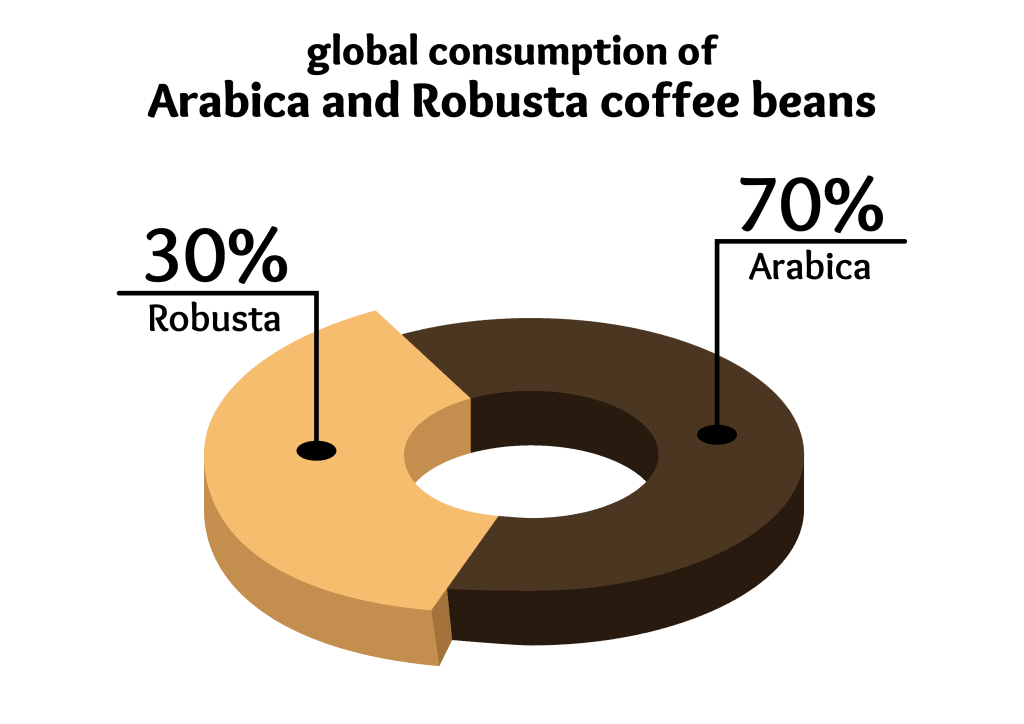
Liberica & Excelsa
Liberica beans are another species you might stumble upon, although they’re far less common than arabica and robusta.
They’re native to Central and Western Africa, but they’re grown today in Malaysia, Indonesia, and the Philippines.
The fact that they can grow at low altitudes in hot, humid climates makes them fairly easy to grow. Still, they only make up around 2% of the global coffee supply.
This type of coffee has a floral, nutty, smoky flavor profile that you either love or hate.
Excelsa coffee beans were thought to be a species in themselves until recently. However, they now officially fall under the umbrella of the liberica species.
These beans grow at medium altitudes, and they don’t have much caffeine or aroma, but they’re full of flavor.
And it’s a pretty unique flavor, at that.
Stenophylla
Up until late 2018, stenophylla – a coffee bean species native to Northwest Africa – hadn’t been seen in the wild since all the way back in 1954.
A few years have passed since its rediscovery, and it still isn’t being grown commercially. But there’s a good chance Stenophylla will become the dominant coffee type in the coming years.
You see, the current situation in the world with climate change is threatening the cultivation of arabica coffee beans. Enter stenophylla – a coffee bean that can grow at higher temperatures than any other species currently being cultivated.
And stenophylla is packed full of flavor and aroma, too. So, at this stage, it actually may be the only hope the future of coffee has.
Roasts
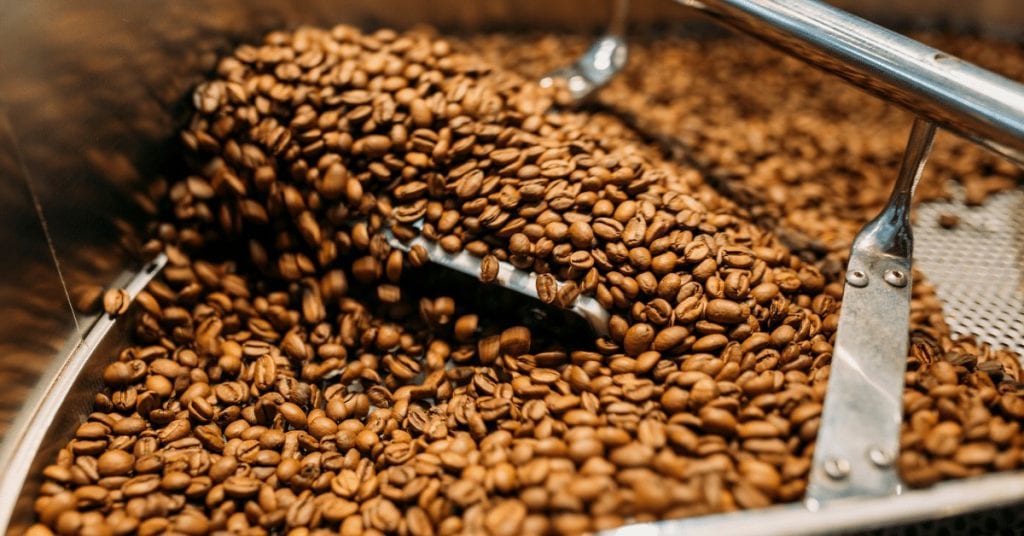
The way you roast your coffee beans also plays an important role.
When coffee beans are roasted, the temperature they’re roasted at, and the amount of time they’re roasted for determines how they’ll taste when brewed into coffee.
You can pretty much sort all roasted coffee beans into the following categories:
- Light
- Medium-light
- Medium
- Medium-dark
- Dark
- Extra dark
The idea is that you’ll want to use different roasts depending on the method you’ll be using to brew your coffee, and on your tastes in general. Filter coffees are usually better with light to medium roasts, while espresso is generally better when made with medium to dark roasts.
So, what’s the difference between a light, medium and dark roast?
Basically, lighter roasts are more acidic, and they also have a higher caffeine content. The lighter, fruity and floral notes are more pronounced in these types of roasts.
Medium roasts have more balanced flavors, aromas and acidity.
Darker roasts have a fuller body, but less subtle aromas. They’ve got lower levels of caffeine, too.
Extra dark roasts are pretty much burnt, with a bitter, smoky taste. They have the least amount of caffeine, even though they definitely taste the strongest.
Additional Reading: Different Types Of Coffee Roasts
Brewing Methods
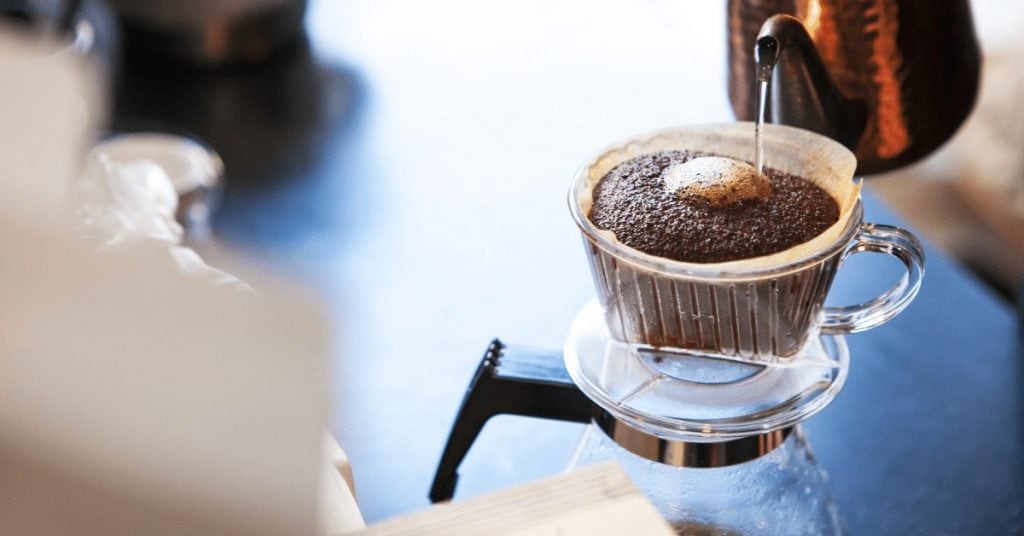
OK, so you’ve selected your beans. Time to get brewing!
But how are you going to do that?
Well, there are quite a few different ways you can go about it.
Each method produces a different type of brew with unique characteristics.
Your main options are:
- Pressure
- Filtration
- Immersion
But it isn’t quite that simple. You see, there are multiple methods to choose from for each of these types of brewing techniques.
PRO TIP
Want to know the most common coffee brewing methods? We have you covered.
Methods That Use Pressure
First up, we have coffee brewing methods that use pressure.
The most famous one of these is espresso. It’s made by pushing hot water through coffee grounds at high pressure to extract a small, concentrated coffee in half a minute or less.
Other brewing methods that use pressure include the moka pot and the AeroPress.
The moka pot gives results that resemble espresso, although not quite as intense.
AeroPress coffee, on the other hand, gives you a brew that looks and tastes a lot more like drip coffee. Really good drip coffee.
Pour Over Methods
Pour over coffee, otherwise known as drip coffee, is coffee that’s brewed by pouring water over a filter full of coffee grinds, and waiting for the coffee to drip down through the filter.
There are quite a few different pour over brewing methods out there. Some of the most popular ones include the Chemex Coffeemaker, the Hario V60, the Kalita Wave, and cold brew coffee.
For all of these methods, it’s generally best to use a light to medium roast.
Because of a slower extraction time and lower water temperature, these roasts will really allow you to taste all the subtle flavors and aromas that the particular coffee bean you’re brewing has to offer.
Immersion Methods
FinaIly, we have immersion brewing methods. These methods all involve steeping coffee in hot water. Some popular methods include the French press, siphon coffee, and the SoftBrew – the new kid on the block.
The principle is the same as brewing tea from tea leaves. You steep coffee grinds in hot water to extract the coffee, then you separate them. What you’re left with is delicious freshly brewed coffee.
How long you steep the coffee for depends on how you like it, and what kind of roast you’re using. You’ll want to experiment with different times to see how it affects the end result.
Black Coffee Beverages
Now, let’s get into all the different types of coffee drinks out there. We’ll start off with coffee drinks that don’t feature milk.
There are lots of different ways you can drink your coffee, depending on your preferences.
Let’s take a closer look at some of the main choices for those that like their coffee black.
Black Coffee
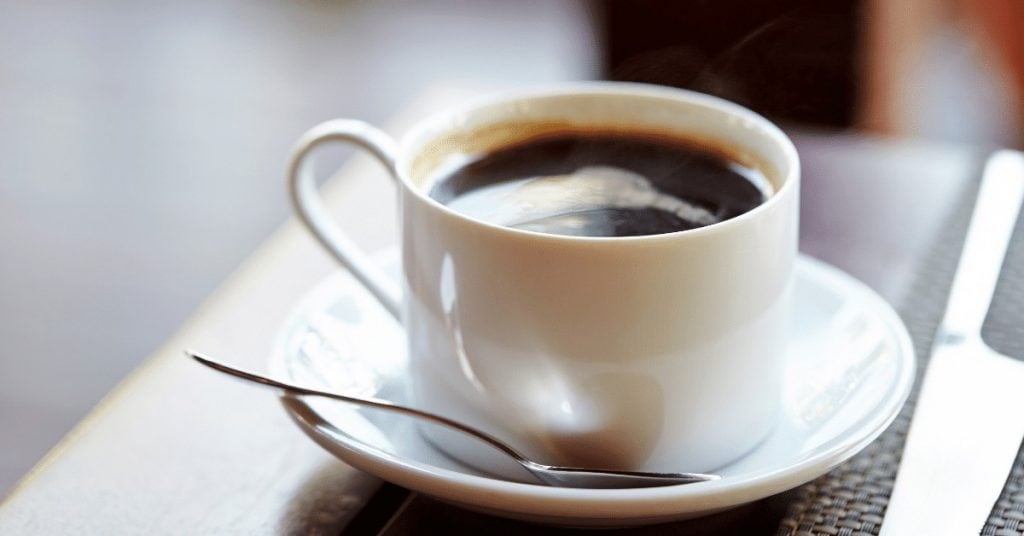
OK, so technically all of the drinks in this section can be classified as black coffee.
But, when we talk about black coffee, we’re usually referring to coffee made using brewing methods other than espresso. Namely, filtration and steeping methods.
Whether it’s a Chemex, a moka pot, a syphon, or, God forbid, an electric percolator.
Black coffee can be the base for other coffee beverages as well, such as red eye, café au lait, Japanese iced coffee, and Irish coffee.
But, more on those further down.
Espresso
A single shot of espresso is only around 1 oz, and takes around half a minute to brew.
It’s quick to brew, and quick to drink. That’s the idea behind it – a quick shot of caffeine to give you a kick of energy when you’re short on time.
It gained popularity in Italy at the very beginning of the 20th century when the espresso machine hit the scene and took the world by storm.
Most of the drinks we’ll cover are variations of espresso, as you’re about to see.
Doppio
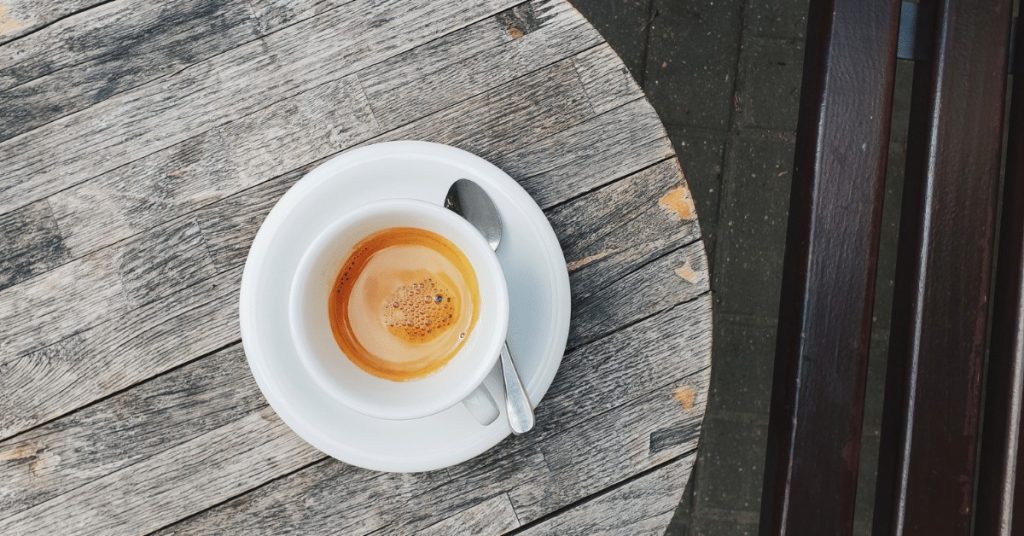
Doppio is Italian for double. In other words, it’s just a fancy way of saying double espresso.
A double shot of espresso is approximately twice the volume of a single shot, but they both take the same amount of time to brew.
In fact, a doppio is made in the exact same way as a single espresso.
The only difference is that the filter handle you use is larger and has 2 holes in the bottom instead of just the 1.
If you’re interested in delving deeper into the world of doppio coffee, check out our article on what is doppio coffee.
Ristretto
And if a regular espresso just isn’t strong or intense enough for you, fear not. Here’s a way to enjoy even stronger espresso coffee, that’s even quicker to knock back.
The ristretto is made with half the amount of water that goes into a regular espresso.
But that doesn’t just mean that you get a more concentrated shot of coffee.
You also get a slightly different flavor in the end, because of a shorter extraction time.
Americano
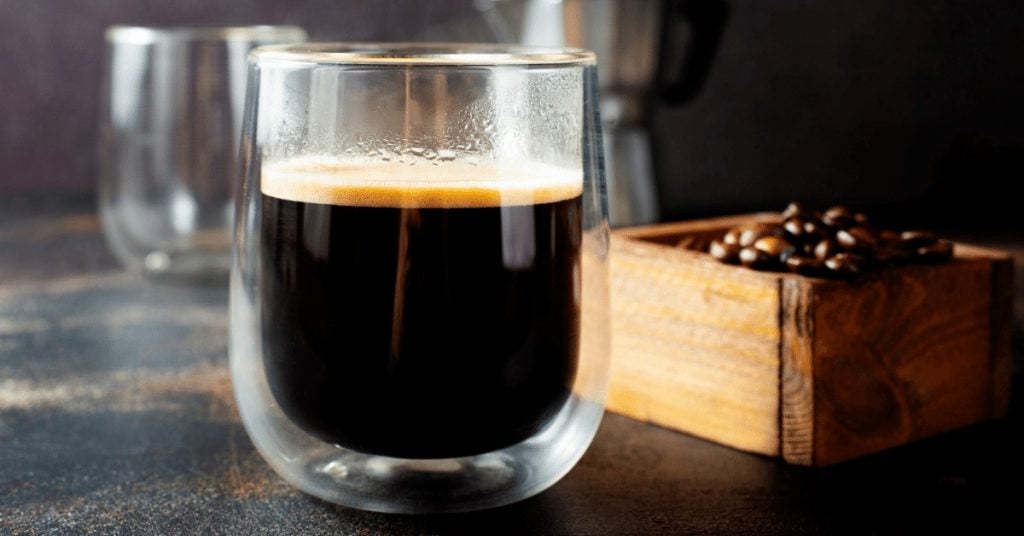
If you’re someone who enjoys taking your time, and enjoying your coffee slowly, you’ll probably want something with a little bit more volume.
And, if you also happen to like your coffee black, one of your best options is a caffè Americano.
It’s made by diluting espresso coffee with hot water, so that you end up with a large cup of coffee from a single shot of espresso.
Fun fact: it’s widely believed that it’s called a caffè Americano because G.I.s in Italy used to make their coffee like this during WW2. Mixing espresso with hot water would give them something similar to the coffee they were used to drinking back home, hence the name.
Long Black
Similar to the Americano, the Long Black is a stronger version that originates in New Zealand.
It’s basically an Americano with more coffee and less water. If you want to take your time drinking your coffee, but you don’t want to dilute it too much, the long black is a happy medium.
It contains a double shot of espresso or ristretto and a small amount of hot water.
Red Eye
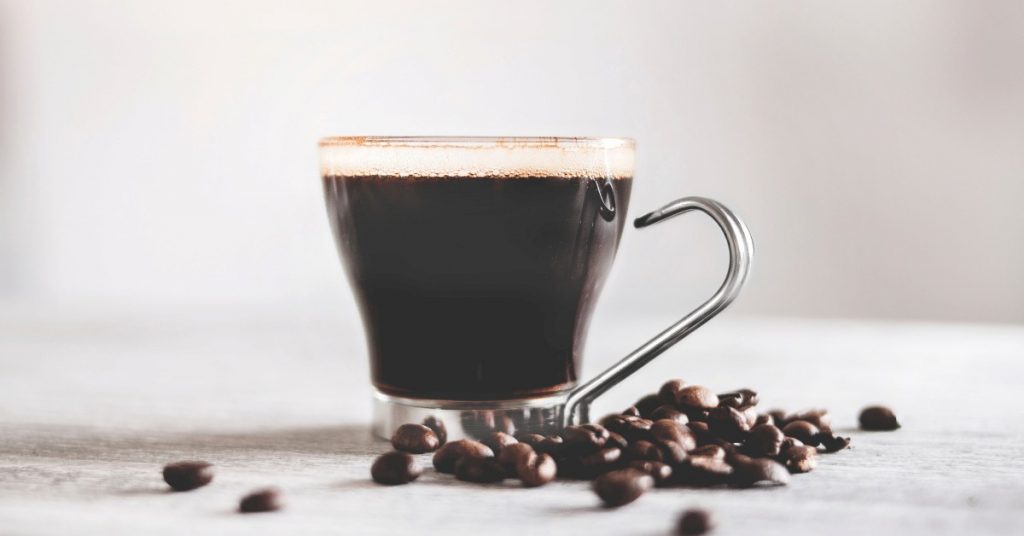
On those days when your cup of coffee needs a cup of coffee, you might want to give this caffeine loaded drink a try.
It’s a cup of black coffee, with a shot of espresso stirred in.
If there are 2 shots of espresso stirred in, then it’s called a black eye.
As absurd as it might seem, when you need a massive hit of caffeine in a single cup, a red eye or a black eye will definitely give you what you’re looking for.
Additional Reading: What Is A Red Eye Coffee? The Strongest Coffee Explained
Coffee Drinks With Milk
Now that we’ve looked at different types of black coffee, let’s see what we can do if we add a little bit of milk.
As much as I can appreciate a good cup of black coffee, I’ll always prefer my coffee with milk.
And there are so many delicious milky coffee drinks to choose from.
Here are some of the main ones, and a little bit about each of them.
Cappuccino
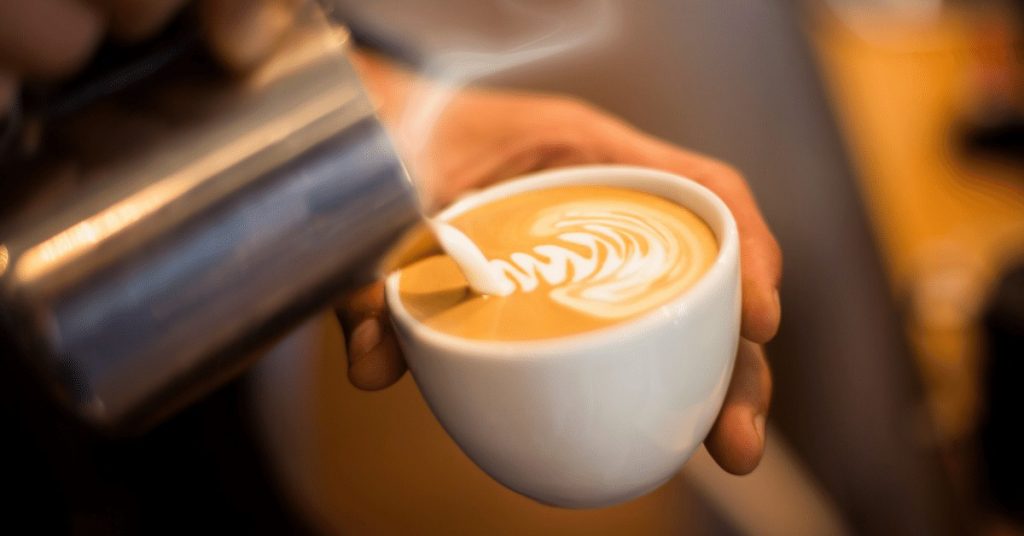
Simply put, a cappuccino is a shot of espresso mixed with steamed milk foam.
Even though it’s one of the most popular coffee drinks out there, and can be found in every café in the world, unfortunately, a lot of people make it incorrectly.
If there’s a bunch of white foam sitting on top of your cappuccino, and you can separate it easily from the liquid underneath when you push it to the side with your spoon – it’s a dud.
A good cappuccino should have the color of coffee in the foam on the surface, and you shouldn’t be able to push the foam to the side with a spoon.
It should be one homogenous, creamy structure throughout – at least for the first couple of minutes after it’s served.
Flat White
The flat white hails from Australia (like me), and it’s quite similar to a cappuccino.
There are, however, two key differences.
The first is that instead of a shot of espresso, the base for a flat white is a double shot of ristretto. It could be made with a double shot espresso, alternatively.
The other difference is in the foam. The steamed milk foam used to make a flat white is finer and less frothy. So, the top of the coffee remains flat and level with the brim of the cup – hence the name flat white.
Latte
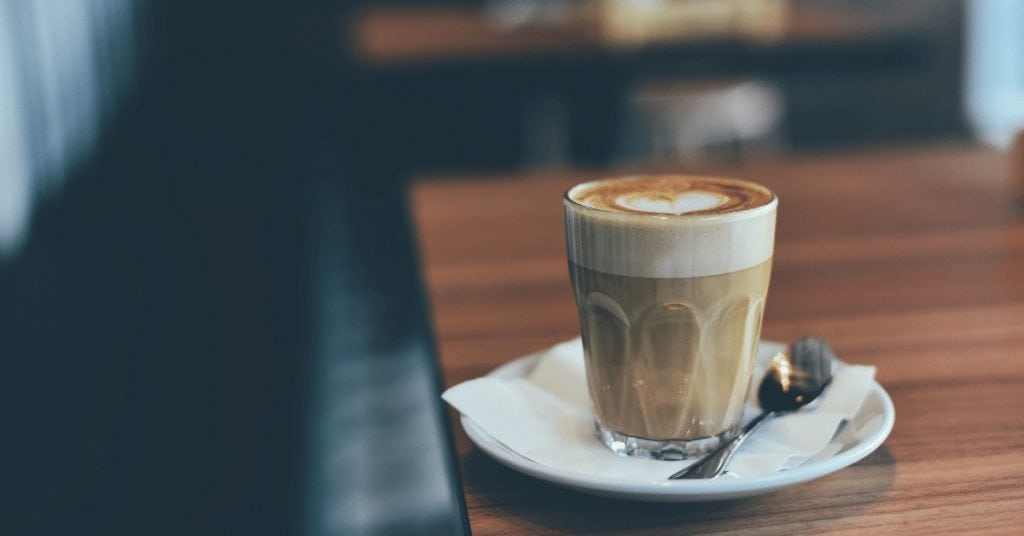
A caffè latte is also a mix of espresso and steamed milk foam – except it has a lot more milk.
Out of all the coffee drinks out there, a latte has the most milk in it. The taste of coffee is a lot less intense than with other milk-based coffee drinks.
But don’t let that fool you.
It still has a full shot of espresso in it – it’s just diluted with more milk.
It might taste like a weaker coffee drink, but it actually isn’t. You’re still getting just as much caffeine as you would in a cappuccino or a straight shot of espresso.
Macchiato
The traditional version of a macchiato is a shot of espresso with just a splash of steamed milk foam.
In Italian, macchiato means stained. So, the drink is called a macchiato because the dash of milk stains the coffee, so to speak.
Because there’s only a little bit of milk in it compared to a cappuccino or a latte, it has a more intense, stronger flavor and a smaller volume.
Nowadays, you’ll often find it made with more than a dash of milk. Some people prefer it that way, and it’s kind of evolved into a whole new drink.
You might hear this referred to as a “topped up” macchiato.
Latte macchiato
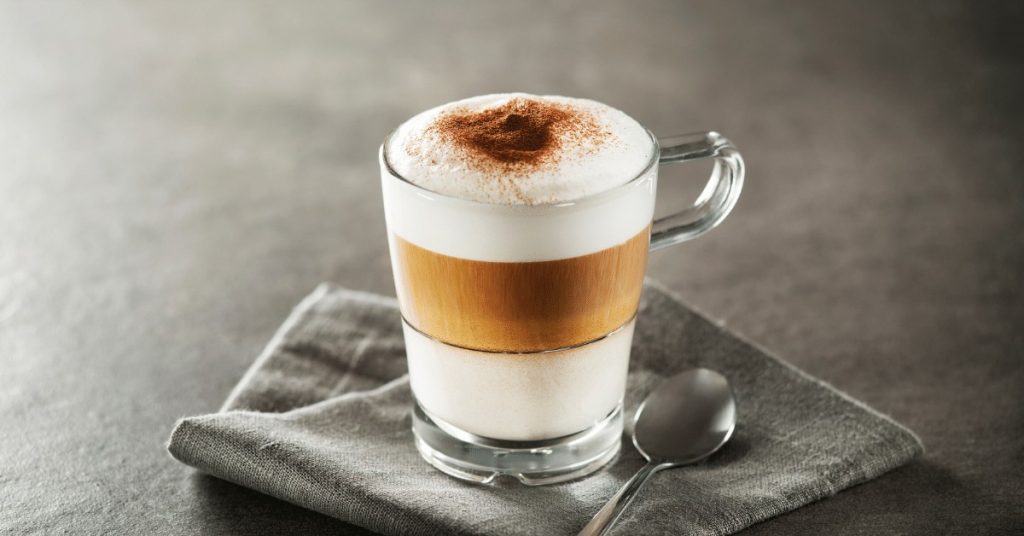
A latte macchiato is basically like an inverse macchiato. A macchiato is coffee stained with a splash of milk, and a latte macchiato is milk stained with a splash of coffee.
It’s made with a shot of espresso and a whole lot of milk – just like a latte. But, while a latte is all mixed together and the same color and consistency throughout, a latte macchiato is layered.
It’s served in a tall, transparent glass, so that you can see all the pretty layers. There’s milk on the bottom, coffee in the middle, and foam on top.
It’s one good looking cup of coffee, if I don’t say so myself.
Cortado
Another delicious milky coffee drink is the cortado. It’s most popular in Spain, Portugal, and Latin America, although it’s gaining popularity in other parts of the world as well.
It’s made with either equal parts espresso coffee and steamed milk, or with 2 parts milk and 1 part espresso, depending on your personal preference.
Compared to other milky coffee drinks, the cortado has a lot less foam and froth on top, but it still has a little bit.
Café Au Lait
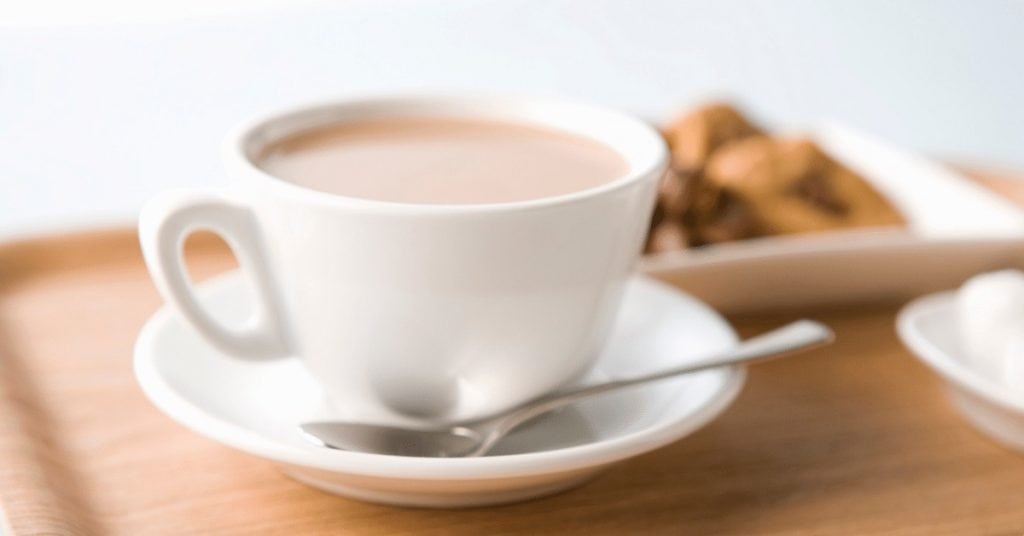
French for coffee with milk, a café au lait is just that. But unlike most of the beverages we’ve talked about, this one is made with freshly brewed black coffee, rather than espresso.
It’s basically a cup of joe with a splash of milk.
Of course, when made with an electric percolator, it probably won’t taste the best.
But, if you use another type of dripper, like a Chemex Coffeemaker or a Moccamaster, you’ll have a fantastic base for an outstanding café au lait.
Breve
The caffè breve is a good one for coffee lovers with sweet tooth.
It’s kind of like a latte, except for the fact that it’s made with steamed half and half milk, instead of regular milk. The result is a thicker, sweeter milk foam that gives you a coffee so sweet there’s no need to add any sugar.
In fact, it’s so rich and creamy that it’s really more of a dessert coffee. It would definitely be a decadent choice for your morning coffee.
Mocha
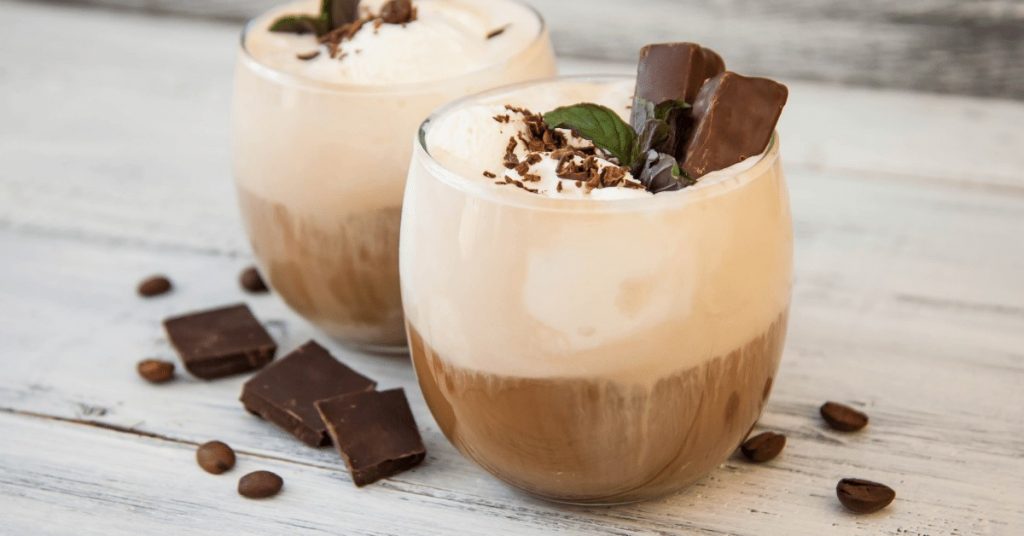
Another legendary dessert coffee is the caffè mocha, sometimes referred to as a mocaccino.
It’s made with espresso, foamed milk, and chocolate. It’s usually topped with whipped cream, and dusted with cocoa powder, chocolate shavings, or cinnamon.
They can also be made with white chocolate, which just takes it to a whole new level if you ask me.
As much as I love plain chocolate, there’s something about white chocolate and coffee that just works so perfectly.
Cold Coffee Specialties
I don’t know about you, but when the weather warms up, I switch to cold coffee in the morning. There’s nothing like getting a caffeine fix and a cold, refreshing beverage all in one on a hot day.
And there are so many delicious iced coffee types to choose from.
Honestly, I don’t think I could pick a favorite – I love them all equally.
These are the main cold coffee beverages you can make to keep cool and caffeinated all summer long.
Iced Coffee
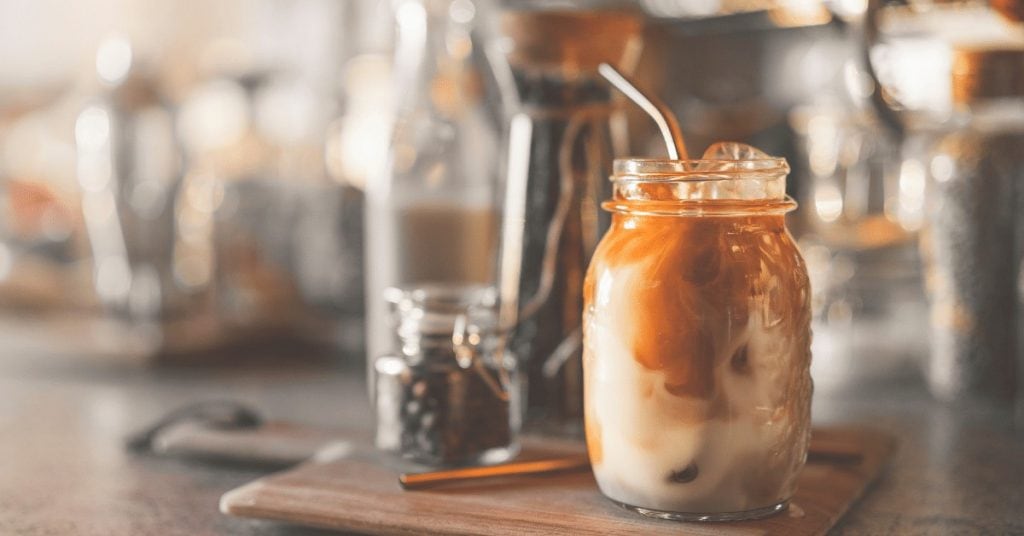
Iced coffee needs no introduction. The name says it all.
It can be black coffee with nothing but ice, but it’s more commonly served with milk or cream, and a little bit of sugar.
You can also add in various other extras such as chocolate or caramel syrup, cinnamon, or Irish cream. Top it off with some whipped cream, too, if you like.
Iced Espresso
While iced coffee is usually made with filter coffee, iced espresso is any espresso based drink over ice.
It can be straight espresso, or a cappuccino, latte, macchiato, mocha, or any other espresso based coffee drink you can think of.
You can also add other ingredients for the flavor to your liking, as well as sugar to make it sweeter if you like your coffee sweet.
Cold Brew
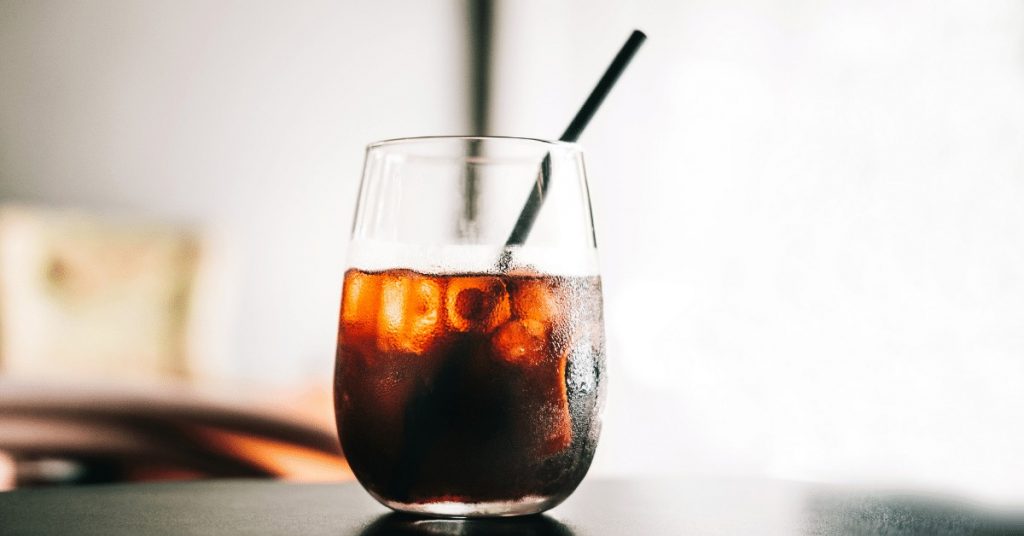
Cold brew coffee is made by mixing coarsely ground coffee beans with cold water, and leaving it overnight to drip out through a filter.
Cold brew coffee generally contains lower levels of caffeine than most other brews.
Why is that, you might be wondering?
Well, caffeine dissolves at high temperatures, so nowhere near as much caffeine will be extracted in cold water, as it would from the same coffee beans in hot water.
This is the only coffee brewing method that uses cold water instead of hot water, and it gives some really nice results. It’s no wonder it’s been so popular all over the world in recent years.
Nitro Cold Brew
Also known as nitrous coffee, nitro cold brew is cold brew coffee infused with nitrogen. Beer brewers have been doing this for ages, but coffee brewers only just caught on relatively recently.
And it works phenomenally well. You get a creamy, velvety brew with a frothy foam head. It also gives it a nice little touch of sweetness, which I, for one, appreciate very much.
A tall glass of nitro cold brew coffee looks kind of like a glass of Guinness beer – which is coincidentally (or not so coincidentally) also infused with nitrogen.
Japanese Iced Coffee
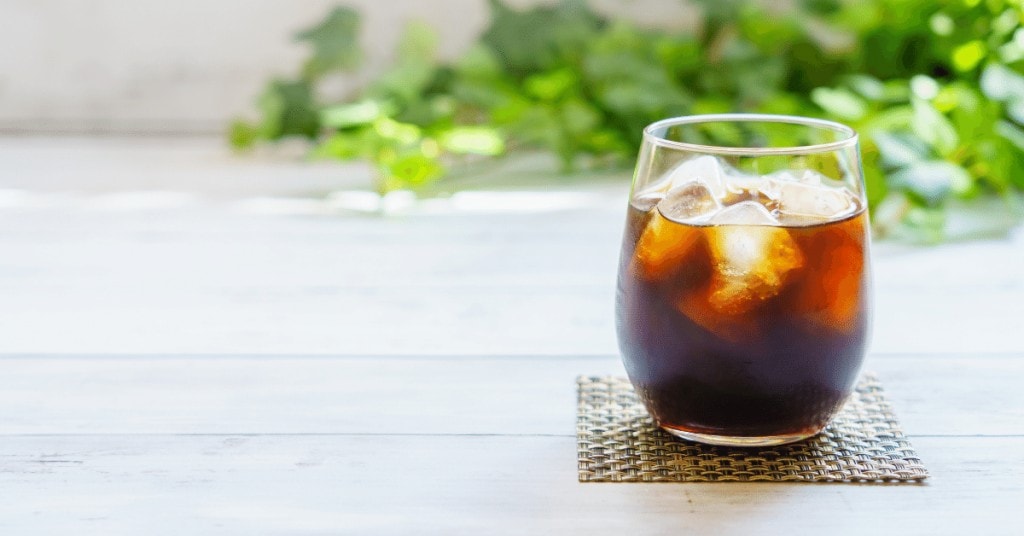
This is another one that’s made using filter coffee rather than espresso. Japanese coffee is super simple, yet super satisfying.
All you do is pour freshly brewed filter coffee over ice, and there you have it.
The trick is to pour it over the ice straight away while it’s still hot.
That way, it releases a whole lot of flavor, giving you a seriously delicious cup of iced coffee.
Frappe
Ever been to Greece?
If you have, you’ve probably had the opportunity to try a caffe frappe.
It’s made with instant coffee that’s whipped with a little water and sugar. This is then topped with cold water and a dash of milk. The whole thing is served over ice.
The frappe is popular all over the world, but mostly in Europe – Southern Europe, more specifically.
I’m personally not a fan of instant coffee (to put it mildly). However, I will admit that this is probably one of the more pleasant ways to drink the stuff.
Especially on a scorching hot day.
Frappuccino
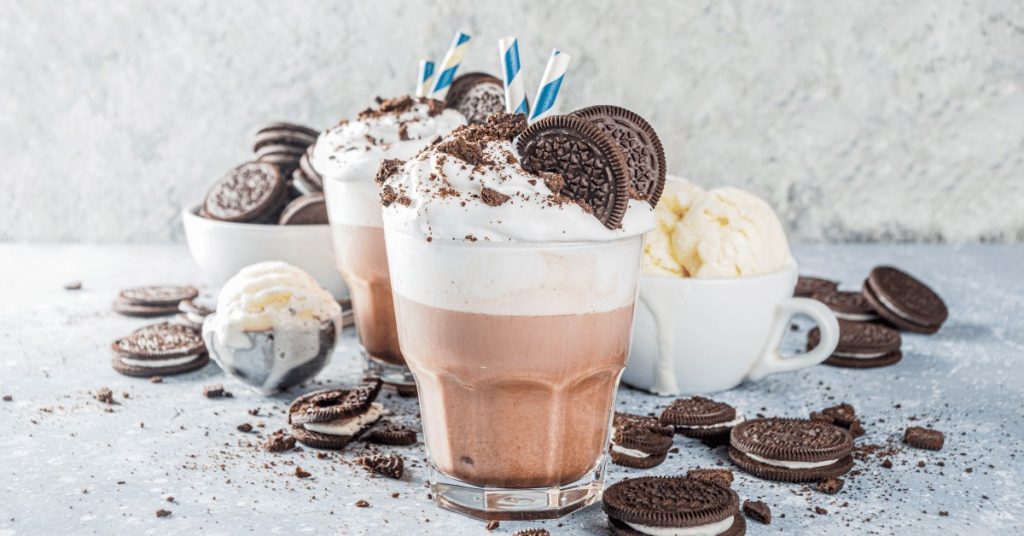
A Frappuccino is another kind of iced coffee – but don’t get it confused with a frappe.
It’s a blended drink with filter or espresso coffee, base syrup, milk, sugar, ice, and any number of possible extras like chocolate, caramel, or vanilla.
Basically, a coffee slushie.
It usually has whipped cream on top, and syrup or chocolate shavings.
It’s a patented Starbucks trademark, although you’ll find them on other menus as well.
The Frappuccino definitely falls into the dessert coffee category, and it’s favored by coffee lovers with a sweet tooth.
But I mean, c’mon, who doesn’t love a frozen dessert?
Other Types Of Coffee
Finally, I want to talk about a few unique and specific types of coffee that don’t really fall into any of the above categories.
They might not be super common, but these interesting coffee types are definitely worth mentioning.
A few of them are popular in other parts of the world, a couple of them contain alcohol, one of them is like a dessert, and one is just plain fascinating.
You shouldn’t have any trouble guessing which is which by the time you’ve finished reading.
Turkish Coffee
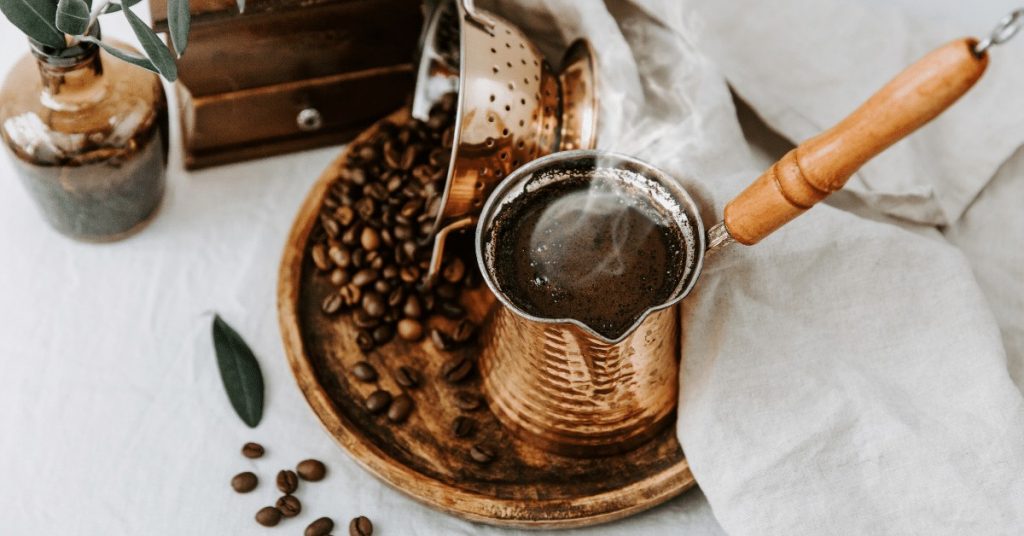
This method has been around for about 500 years, and it played an important role in the history of coffee brewing around the world.
To this day, many people in different parts of the world, such as the Middle East and parts of Europe, still widely use this simple coffee brewing method.
It’s made by mixing finely ground coffee directly with boiling water. Traditionally, it was made using an “ibrik,” which is a copper or brass pot that’s wider at the bottom and narrower towards the top.
The reason why they used this type of pot is that they weren’t able to grind the coffee finely enough. Because of this, the grounds wouldn’t sink to the bottom unless it was boiled in an ibrik.
Today, the coffee that’s used to make Turkish coffee is ground so finely that the shape of the pot no longer plays an important role. But, many people still use an ibrik, to keep with tradition.
Vietnamese Coffee
Vietnamese coffee is coffee that’s made using a Vietnamese phin dripper. It’s a little metal gadget that you can use to make coffee straight over your cup.
You can make it on its own, but I wouldn’t recommend it if you’re actually in Vietnam.
Why?
Well, the coffee that’s consumed in Vietnam is typically pure robusta. Robusta has a fuller body and is less aromatic than arabica.
For this reason, the Vietnamese usually put a tablespoon or two of sweetened condensed milk in the glass. Then, they let the coffee drip onto it through the phin.
This helps to balance out the flavors and makes it taste better, but of course, it also makes it sweet. Some people won’t enjoy the sweetness, but I personally think it gives it a wonderful and unique taste and texture.
I usually take my coffee without sugar, but I definitely won’t say no to a Vietnamese coffee with sweetened condensed milk.
Pour it over ice for a Vietnamese iced coffee, which is one of the best iced coffee variations out there, if you ask me.
Kopi Luwak
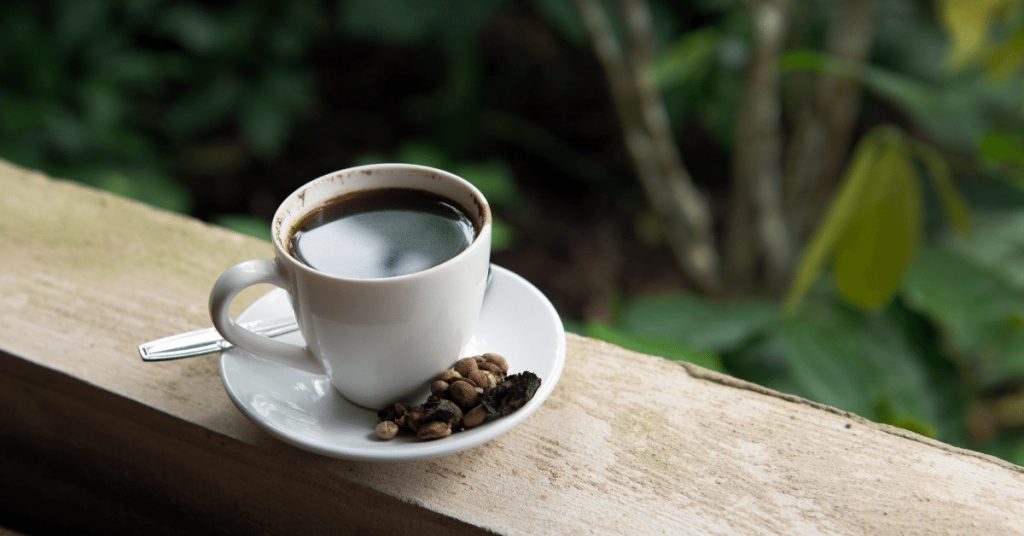
You might have heard of kopi luwak. It’s famous for being one of the most expensive coffee types in the world.
But, what it’s even more famous for is how it’s harvested.
If you’re not familiar with kopi luwak, it’s coffee made from beans that have been digested by an Asiam palm civet. The civet is a small, nocturnal animal that’s found in South and Southeast Asia.
That’s right – we’re talking about pooped out coffee beans.
At a premium price, let’s not forget.
Unfortunately, this craze has led to civets being held in captivity in inhumane conditions. And, the product you get from captive civets is inferior to kopi luwak from wild civets anyway.
You see, wild civets eat only the crème de la crème of coffee cherries, whereas captive civets are fed and eat what they’re given. This obviously plays a huge role in the quality of the final product.
But, you have no way of telling what you’re getting, and it’s often falsely labelled as a result.
Affogato
I live for affogato.
This delicious Italian coffee drink is simple yet absolutely delightful.
It’s a combination of two of my favorite things in the whole entire world: coffee and ice cream.
Affogato is made by pouring a shot (or a double shot, if you like) of espresso over a scoop of creamy vanilla gelato.
The result is a little piece of heaven in a cup. Especially if you go all out and add a shot of liqueur. Baileys would have to be my top recommendation, followed closely by amaretto.
You can also add whipped cream, crushed biscotti, or crushed nuts, if you feel like it.
Irish Coffee
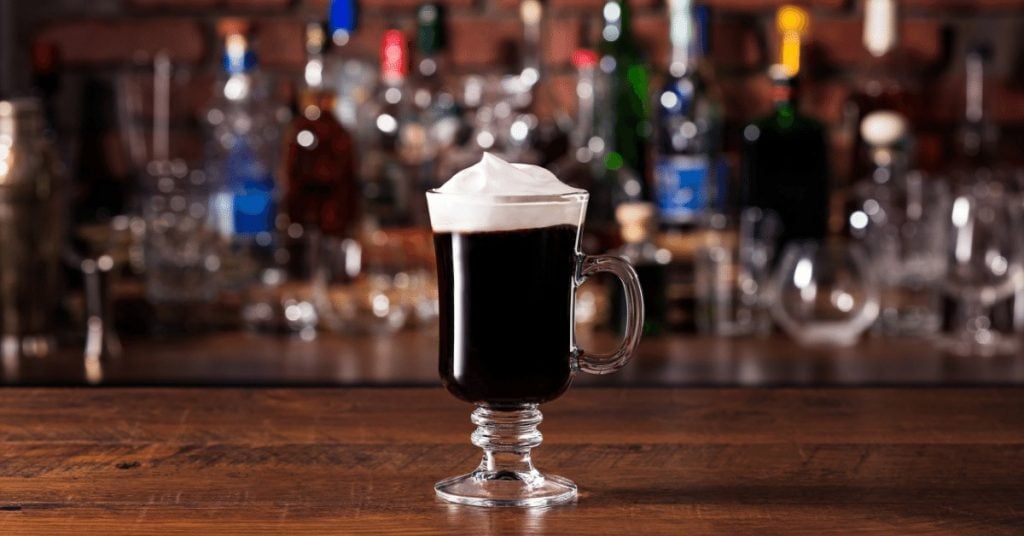
Now, moving onto some of the world’s favorite boozy coffee drinks. To kick things off, let’s take a look at Irish coffee.
It’s made by adding whiskey and sugar to freshly brewed black coffee.
Most of the time, you’ll also get a nice, big dollop of whipped cream (and some chocolate shavings if you’re lucky) on top to finish off this taste sensation.
You can also add milk if you like, although it’s most commonly taken black.
Be warned – these are usually quite strong, since they have a full shot of whiskey in them.
Espresso Martini
To finish things off, here’s one more alcoholic coffee beverage. The espresso martini emerged in the late 1980s and quickly became wildly popular all over the world.
It’s a shaken cocktail that consists of fresh espresso, vodka, coffee liqueur, and sugar syrup. It’s served in a martini glass, and has a nice, frothy top garnished with coffee beans that’ll have you licking your lips.
The espresso martini kind of seems to disappear and reappear every now and then, rising and falling in popularity for no apparent reason.
But, it just so happens to have seen a spike in popularity again recently, so if you haven’t tried this iconic cocktail yet – now is a perfect time.
Wrapping Up
As you can see, coffee can be made in so many different ways.
A lot of factors come into play – from the type of coffee bean, to the roast, how it’s brewed, and what kind of beverage it’s used to make.
With so many types of coffee out there, there really is something for everyone. It’s just a matter of trying different things out and figuring out which types of coffee appeal to you the most.
So, get out there and try some new types of coffee that you haven’t had yet.
Who knows?
You might just find a new favorite type of coffee and never look back.
If you don’t know where to start, try macchiato or americano, which are among the most popular espresso based drinks nowadays.


